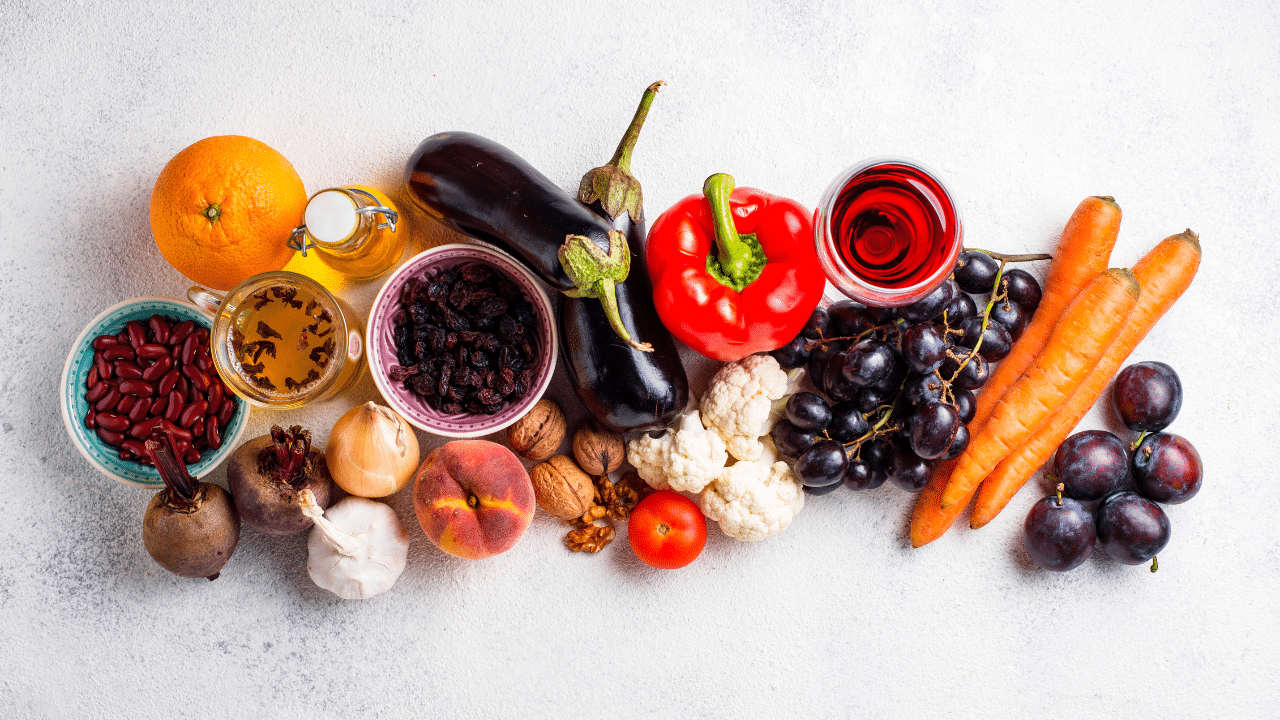
Top 15 Scientifically Proven Foods to Lower Blood Pressure Naturally
Understanding Hypertension and Dietary Impact
High blood pressure occurs when the force of blood against your artery walls is consistently too high. This puts extra strain on your heart and blood vessels, potentially leading to serious health complications. While genetics and age play roles in hypertension, diet is one of the most modifiable factors.
Research shows that certain nutrients like potassium, magnesium, calcium, and compounds such as nitrates and flavonoids can help relax blood vessels, reduce inflammation, and improve overall cardiovascular function. The foods we’ll discuss contain these beneficial components in abundance.
According to the American Heart Association, even modest reductions in blood pressure through dietary changes can significantly decrease your risk of heart disease. A reduction of just 5-10 mm Hg in systolic blood pressure (the top number) can reduce your risk of heart disease and stroke by 20-40%.
Get Our Free Blood Pressure Management Guide
Subscribe to our newsletter and receive our comprehensive guide to natural blood pressure management, including meal plans, recipes, and the latest research updates.
Fruits and Vegetables for Blood Pressure Control
1. Berries
- Key Nutrients: Anthocyanins and flavonoids
- How They Work: These plant compounds increase nitric oxide levels in the blood, which helps blood vessels relax and dilate
- Scientific Evidence: A 2019 review published in the Journal of Gerontology found that consuming anthocyanin-rich berries can reduce systolic blood pressure by an average of 3.5 mm Hg
- Recommended Serving: 1 cup of fresh berries daily or 1/2 cup of frozen berries
2. Bananas
- Key Nutrients: Potassium (422 mg per medium banana)
- How They Work: Potassium helps counteract the effects of sodium and reduces tension in blood vessel walls
- Scientific Evidence: The American Heart Association confirms that potassium helps manage blood pressure by balancing the amount of sodium in your body
- Recommended Serving: One medium banana daily (approximately 118 grams)
3. Leafy Green Vegetables
- Key Nutrients: Potassium, magnesium, and nitrates
- How They Work: Nitrates convert to nitric oxide in the body, which relaxes blood vessels and improves blood flow
- Scientific Evidence: A 2021 study published in the European Journal of Epidemiology found that consuming at least 1 cup of green leafy vegetables daily can lower blood pressure and reduce cardiovascular disease risk
- Recommended Serving: 1-2 cups of raw leafy greens or 1 cup of cooked greens daily
4. Beets
- Key Nutrients: Dietary nitrates
- How They Work: Nitrates convert to nitric oxide, which relaxes blood vessels and improves blood flow
- Scientific Evidence: A 2022 systematic review in Nutrients found that beetroot juice significantly lowers systolic blood pressure in people with hypertension
- Recommended Serving: 1 cup of fresh beets or 8 ounces of beetroot juice daily
5. Citrus Fruits
- Key Nutrients: Hesperidin (a flavonoid) and vitamin C
- How They Work: Hesperidin improves blood vessel function, while vitamin C acts as an antioxidant that protects blood vessels
- Scientific Evidence: A 2021 study in the European Journal of Nutrition found that regular consumption of orange juice reduced systolic blood pressure, with hesperidin contributing to this effect
- Recommended Serving: One medium orange or grapefruit daily, or 8 ounces of fresh citrus juice
Protein Sources That Lower Blood Pressure
6. Fatty Fish
- Key Nutrients: Omega-3 fatty acids (EPA and DHA)
- How They Work: Reduce inflammation, improve arterial function, and help lower blood pressure
- Scientific Evidence: A 2022 meta-analysis published in the Journal of the American Heart Association found that consuming 2-3 grams of omega-3 fats daily produced the largest benefit for lowering blood pressure
- Recommended Serving: Two 3.5-ounce servings of fatty fish like salmon, mackerel, or sardines per week
7. Yogurt
- Key Nutrients: Calcium, potassium, and probiotics
- How They Work: Calcium and potassium help regulate blood pressure, while probiotics may improve gut health and reduce inflammation
- Scientific Evidence: A 2021 study in the International Dairy Journal found that among people with high blood pressure, consuming one serving of yogurt per day was associated with lower systolic blood pressure
- Recommended Serving: One 6-ounce container of plain, unsweetened yogurt daily
8. Lentils and Beans
- Key Nutrients: Potassium, magnesium, and fiber
- How They Work: The combination of minerals helps regulate blood pressure, while fiber improves heart health
- Scientific Evidence: A 2022 study in the British Journal of Nutrition found that higher legume consumption (55-70g daily) was associated with a lower risk of hypertension
- Recommended Serving: 1/2 cup of cooked lentils or beans daily
Grains, Nuts, and Seeds for Healthy Blood Pressure
9. Oats
- Key Nutrients: Beta-glucan fiber and magnesium
- How They Work: Beta-glucan helps reduce cholesterol and may improve blood pressure, while magnesium relaxes blood vessels
- Scientific Evidence: Research published in the Journal of Nutrition found that regular consumption of whole oats can significantly reduce both systolic and diastolic blood pressure
- Recommended Serving: 1/2 cup of dry oats (makes about 1 cup cooked) daily
10. Nuts and Seeds
- Key Nutrients: Magnesium, potassium, L-arginine, and healthy fats
- How They Work: L-arginine converts to nitric oxide, which relaxes blood vessels; minerals help regulate blood pressure
- Scientific Evidence: A 2019 study in the Journal of the American Heart Association found that regular walnut consumption reduces systolic blood pressure in older adults with mild hypertension
- Recommended Serving: 1/4 cup (about a handful) of unsalted nuts or 2 tablespoons of seeds daily
Other Beneficial Foods for Blood Pressure
11. Olive Oil
- Key Nutrients: Polyphenols and oleic acid (omega-9 fatty acid)
- How They Work: Polyphenols have antioxidant effects that improve endothelial function and reduce inflammation
- Scientific Evidence: A 2020 review in Nutrients found that olive oil consumption is associated with reduced blood pressure due to its beneficial nutrients
- Recommended Serving: 2-3 tablespoons of extra virgin olive oil daily
12. Dark Chocolate
- Key Nutrients: Flavanols
- How They Work: Flavanols stimulate nitric oxide production and improve blood vessel function
- Scientific Evidence: Multiple studies show that cocoa flavanols can modestly reduce blood pressure, though the American Heart Association notes the effect may be limited
- Recommended Serving: 1 ounce of dark chocolate (70% cocoa or higher) a few times per week
13. Garlic
- Key Nutrients: Allicin and other sulfur compounds
- How They Work: Stimulate nitric oxide production and have antioxidant effects
- Scientific Evidence: A 2020 review in Experimental and Therapeutic Medicine concluded that garlic supplements can reduce blood pressure, arterial stiffness, and cholesterol
- Recommended Serving: 1-2 fresh garlic cloves daily or 300-600 mg of aged garlic extract
14. Pomegranates
- Key Nutrients: Polyphenols and antioxidants
- How They Work: Reduce oxidative stress and improve endothelial function
- Scientific Evidence: A 2017 review of eight clinical trials found that pomegranate juice consumption consistently lowered blood pressure
- Recommended Serving: 8 ounces of pure pomegranate juice or 1/2 cup of pomegranate arils daily
15. Herbs and Spices
- Key Nutrients: Various polyphenols and bioactive compounds
- How They Work: Anti-inflammatory and antioxidant effects that improve vascular function
- Scientific Evidence: A 2021 study in the American Journal of Clinical Nutrition found that seasoning foods with 6.6 grams of herbs and spices daily was linked to lower blood pressure after 4 weeks
- Recommended Serving: Liberal use of herbs and spices in cooking, with particular emphasis on cinnamon, basil, cardamom, and ginger
Effective Dietary Patterns for Blood Pressure Management
While individual foods can help lower blood pressure, research shows that overall dietary patterns have an even stronger impact. Here are two evidence-based approaches:
The DASH Diet
The Dietary Approaches to Stop Hypertension (DASH) diet was specifically developed to lower blood pressure. Multiple studies show it can reduce systolic blood pressure by 8-14 mm Hg, which is comparable to some medications.
DASH Diet Principles:
- Rich in fruits, vegetables, and whole grains
- Includes low-fat dairy, lean proteins, and legumes
- Limits sodium, sweets, and red meats
- Emphasizes foods high in potassium, magnesium, and calcium
Daily DASH Servings:
- 4-5 servings of vegetables
- 4-5 servings of fruits
- 6-8 servings of whole grains
- 2-3 servings of low-fat dairy
- ≤ 6 ounces of lean meat, poultry, or fish
- 4-5 servings of nuts, seeds, and legumes per week
The Mediterranean Diet
The Mediterranean diet has been shown to reduce blood pressure and overall cardiovascular risk. A landmark study found it reduced the risk of major cardiovascular events by about 30%.
Mediterranean Diet Principles:
- Abundant plant foods (fruits, vegetables, whole grains)
- Olive oil as the primary fat source
- Moderate consumption of fish, poultry, and dairy
- Limited red meat intake
- Optional moderate wine consumption with meals
Key Mediterranean Components:
- Daily olive oil consumption (2-3 tablespoons)
- At least 2 servings of vegetables per meal
- At least 2-3 servings of fresh fruit daily
- Legumes at least 3 times per week
- Fatty fish at least twice per week
- Nuts and seeds regularly (handful daily)
3 Easy Recipes to Lower Blood Pressure
Incorporating blood pressure-friendly foods into your diet can be delicious and simple. Here are three recipes that combine multiple beneficial ingredients:
1. Berry-Banana Overnight Oats
This make-ahead breakfast combines oats, berries, and bananas for a triple blood pressure benefit.
Ingredients:
- 1/2 cup rolled oats
- 2/3 cup low-fat yogurt
- 1/3 cup unsweetened almond milk
- 1 tablespoon chia seeds
- 1/2 banana, sliced
- 1/2 cup mixed berries
- 1/2 teaspoon cinnamon
- 1 teaspoon honey (optional)
Instructions:
- Combine oats, yogurt, almond milk, and chia seeds in a jar or container.
- Stir well, then refrigerate overnight.
- In the morning, top with sliced banana, berries, cinnamon, and a drizzle of honey if desired.
2. Mediterranean Lentil and Spinach Soup
This hearty soup combines lentils, leafy greens, and olive oil for a blood pressure-friendly meal.
Ingredients:
- 1 tablespoon extra virgin olive oil
- 1 onion, diced
- 2 carrots, diced
- 3 garlic cloves, minced
- 1 cup dried lentils, rinsed
- 4 cups low-sodium vegetable broth
- 1 can (14 oz) diced tomatoes
- 2 cups fresh spinach
- 1 teaspoon cumin
- 1/2 teaspoon cinnamon
- Fresh lemon juice to taste
Instructions:
- Heat olive oil in a large pot over medium heat. Add onion and carrots, cooking until softened.
- Add garlic and cook for 30 seconds until fragrant.
- Add lentils, broth, tomatoes, cumin, and cinnamon. Bring to a boil, then reduce heat and simmer for 25-30 minutes until lentils are tender.
- Stir in spinach and cook until wilted. Add lemon juice to taste.
3. Baked Salmon with Citrus and Herbs
This omega-3 rich dish combines fatty fish with citrus and herbs for maximum blood pressure benefits.
Ingredients:
- 2 salmon fillets (4-6 oz each)
- 1 tablespoon olive oil
- 2 cloves garlic, minced
- 1 lemon, sliced
- 1 orange, sliced
- Fresh herbs (dill, parsley, basil)
- 1/4 teaspoon black pepper
Instructions:
- Preheat oven to 375°F (190°C).
- Place salmon on a baking sheet lined with parchment paper.
- Brush with olive oil and sprinkle with garlic and pepper.
- Arrange citrus slices and herbs on and around the salmon.
- Bake for 15-18 minutes until salmon flakes easily with a fork.
Practical Tips for Implementation
Gradual Integration
- Start by adding one new blood pressure-friendly food each week
- Replace high-sodium processed foods with fresh alternatives
- Experiment with herbs and spices to reduce salt dependency
- Keep a food journal to track your progress and blood pressure readings
Smart Shopping
- Shop the perimeter of the grocery store where fresh foods are located
- Read nutrition labels and choose low-sodium options
- Buy frozen berries and vegetables when fresh aren’t available
- Consider local farmers’ markets for fresh, seasonal produce
Ready to Take Control of Your Blood Pressure?
Consult with a healthcare professional about incorporating these dietary changes into your blood pressure management plan. Download our free meal planning guide to get started today.
Conclusion: Your Path to Healthier Blood Pressure
The foods we’ve discussed offer powerful, natural ways to help lower blood pressure and improve heart health. Research consistently shows that a diet rich in fruits, vegetables, whole grains, lean proteins, and healthy fats can significantly reduce blood pressure levels, sometimes comparable to medication.
Remember that dietary changes work best as part of a comprehensive approach that includes regular physical activity, stress management, adequate sleep, and medication if prescribed by your doctor. Even modest reductions in blood pressure can significantly decrease your risk of heart disease and stroke.
Start by incorporating a few of these foods into your meals each day, gradually building toward a diet that naturally supports healthy blood pressure. Small, consistent changes often lead to the most sustainable results. Your heart will thank you for every healthy choice you make.
Always consult with your healthcare provider before making significant dietary changes, especially if you’re currently taking medication for high blood pressure or have other health conditions.


